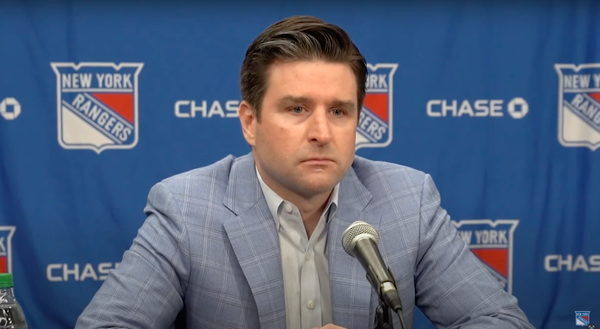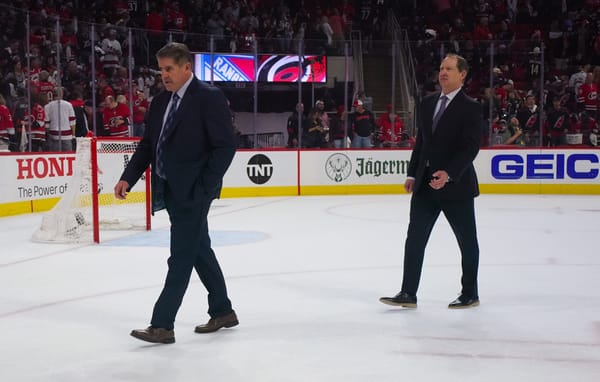New York Rangers Analysis: Getting to know Kevin Hayes
Glen Sather scored a major coup by luring Kevin Hayes away from a number of other would-be suitors, and bring the Boston College prospect to Broadway.
BOSTON -- It was five games into Boston College's 2013-14 season, and the Eagles were in the midst of an up-and-down start, with a record of 2-2-1. But BC was at home that night on November 1, facing Hockey East rival Northeastern, and a Husky team that had come out of the gate hot at 5-1.
Kevin Hayes himself had been putting up steady numbers, but inconsistent production. Hayes had six points thanks to two three-point games, while going scoreless in his other three appearances.
And then something changed that night against Northeastern for Hayes. The 6-foot-3 power forward flipped the switch, using his big frame to bully defenseman, en route to a goal and a game-winning assist to help the Eagles to a 4-2 win.
The key for Hayes was simply playing an "up-and-down" style, himself.
If you're looking for when Hayes' season went on a dramatic upswing, it was that early season meeting against Northeastern, and not when Hayes joined forces with Hobey Baker winner Johnny Gaudreau. It was when Hayes began to really play within his strengths, and with an edge.
"I caught the [defense] flat-footed and took them wide," said Hayes after the game, describing his goal. "Coach has been hopping on me to be more of a power forward and not be so finesse out there.
"I just drove to the net, and I was lucky enough that the goalie came back inside, and I put it in."
Jerry York, BC's head coach, echoed his instructions to his senior forward; that he had been instructing Hayes to be a more north-south player. The instructions proved to be quite useful.
And that's what makes Hayes such an exciting NHL prospect. His size will allow him to continue to bang bodies at the pro level, while his hands and vision round out his offensive dynamic. He has the ability to play that finesse style, which is way more effective when complementing his straight ahead style.
Hayes suffered a freak quadriceps injury his junior season that threatened his career. Three surgeries later, and Hayes was back on the ice for his senior season after he decided not to jump ship and sign with the Blackhawks. It's entirely possible that coming off that series of surgeries, Hayes was timid when it came to initiating contact. Or maybe Hayes' high skill level simply led him to play a different style. But as soon as Hayes began going north-south, the production came, and he didn't have any problem dominating his college competition.
 More on Kevin Hayes
More on Kevin Hayes 
 More on Kevin Hayes
More on Kevin Hayes 
There is of course the matter of playing with Gaudreau and Bill Arnold, a trio that made up the best line in college hockey in recent memory. Hayes' increase in production wasn't as astronomical as many painted it to be (it went up 0.19 points per game after he was put on a line with Gaudreau), while Hayes was as integral a piece to the line as his dynamic line mate.
A bigger player, Hayes can create room for himself or his teammates on the ice, while he certainly doesn't need the puck to be effective. There's no doubt Gaudreau was key in that element, as college hockey's leading scorer was deft in finding Hayes all season long in tight spaces. But Hayes' blend of size and skill along with the style he plays makes him a very intriguing prospect, and a player who likely can contribute sooner rather than later.
Hayes played the point on BC's top power play unit, an area the Rangers will likely change if Hayes does see any special teams time down the road. But there should be no reason to think Hayes doesn't have the inside track right now to slot in as the Rangers third line right winger, with the departure of Benoit Pouliot, and the depth that shuffle could have by bumping Lee Stempniak down to the fourth line.
That's a move that could also help shelter Hayes' zone starts (he's good, not great in the defensive zone), while allowing Stempniak to be deployed in a more defensive role alongside Dominc Moore.




